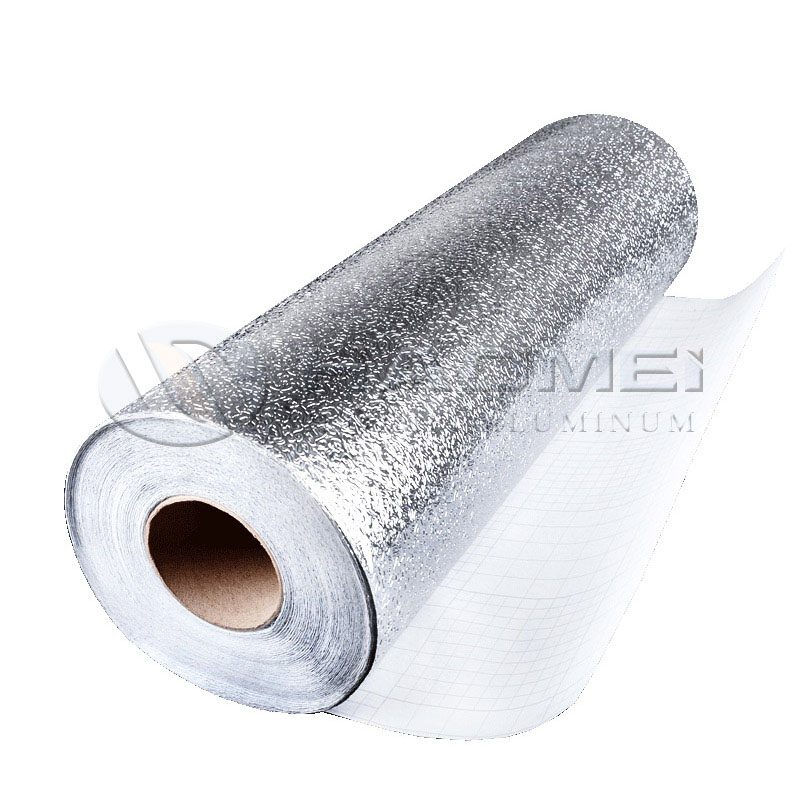Aluminum foil for air conditioning can be divided into the following categories according to its processing technology and performance characteristics.
1, uncoated aluminum foil
Non coated aluminum foil refers to the aluminum foil which has not been treated in any form after rolling and annealing.
2. Coated aluminum foil
Coated aluminum foil is the surface treatment of non coated aluminum foil, so that it has a special function.
3, corrosion resistant aluminum foil
Corrosion-resistant aluminum foil products have a certain corrosion-resistant protective layer on the surface. The air-conditioning heat exchanger made of this product can be used in worse areas, and can significantly improve the service life of air conditioning. At the same time, the corrosion resistance of heat exchanger is improved, which greatly reduces the formation of corrosion powder on the surface, thus improving the ventilation quality and purifying the air in the air conditioning room.

4, hydrophilic aluminum foil
The hydrophilic aluminum foil has strong hydrophilicity on the surface. The quality of hydrophilicity is determined by the size of the angle formed after the water adheres to the surface of the aluminum foil.
The hydrophilic aluminum foil is usually used on the condenser of the air conditioner. Its main function is to make the moisture in hot air condense into droplets on the heat exchanger and spread out easily and flow down the sheet. In this way, the ventilation effect of the heat exchanger can be avoided because of the water droplets “bridging” between the heat exchangers, and the heat exchange rate of the air conditioner can be improved, and the electric energy can be saved under the same refrigeration capacity. At present, the hydrophilic aluminum foil on the market has not only good hydrophilic surface, but also high corrosion resistance, so as to optimize the performance of air conditioning.
5. Hydrophobic aluminum foil
Hydrophobic aluminum foil, also called water repellent aluminum foil, has the opposite properties of hydrophilic aluminum foil. That is, when condensation water condenses to the surface of aluminum foil, the contact angle with aluminum foil is large, generally 75. Above. The greater the angle, the better the water repellency. The ultimate purpose of using hydrophobic aluminum foil is the same as hydrophilic aluminum foil, that is, to keep the condensate between the heat exchangers. The difference is that the hydrophobic aluminum foil can remove the condensate between the heat exchangers by increasing the contact angle between the condensate and the heat exchanger to form water droplets which are easy to slide.
6. Self lubricating aluminum foil
In the process of manufacturing air-conditioning heat exchanger, lubricating oil should be added to its surface first, then punched and flanged, and then trichloroethylene is used to wash off the lubricating oil. Because trichloroethylene is harmful to human body, self-lubricating aluminum foil is produced to reduce this process. Self-lubricating aluminum foil, as its name implies, is in its punching process does not need to add lubricating oil alone, its punching lubrication by the aluminum foil surface pre-treated film to bear. Since no special lubricant is required, the subsequent trichloroethylene cleaning and drying processes are omitted.
7, mildew resistant aluminum foil
Anti-mildew aluminium foil is mainly used for indoor air-conditioning equipment. Its main function is to prevent the surface of heat exchanger from mildewing because of its long use or placement time, thus significantly improving the air quality of air-conditioning, preventing the production of abnormal odor and effectively improving the indoor environment.



